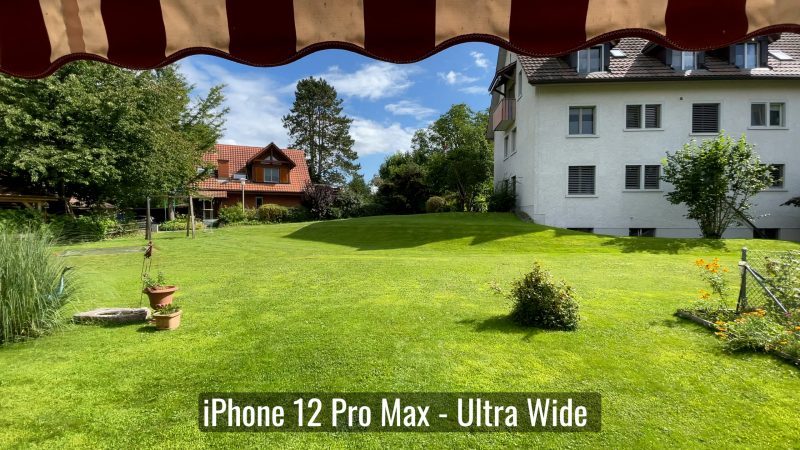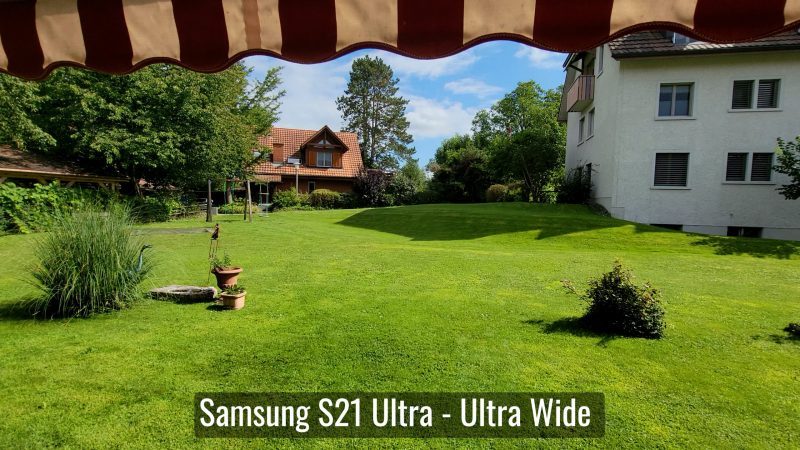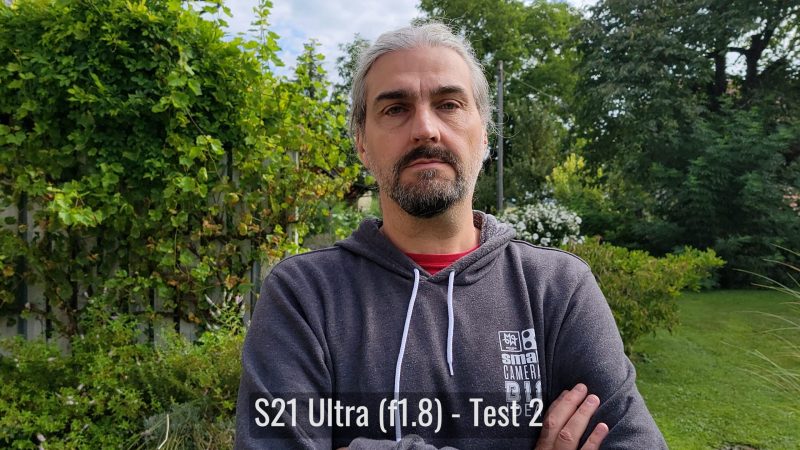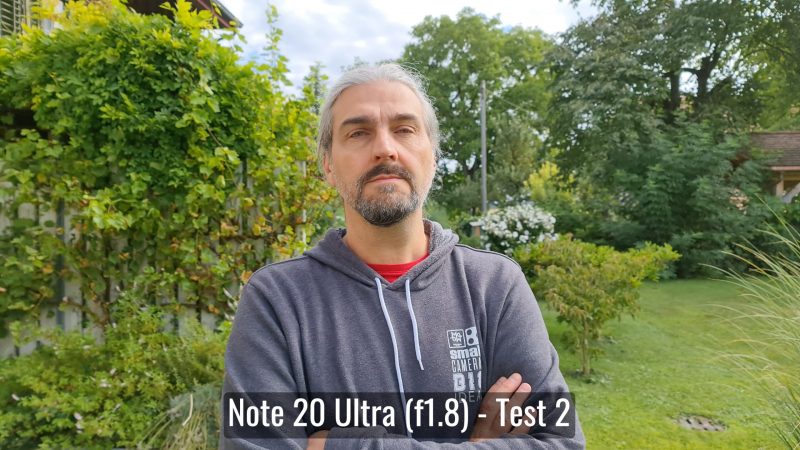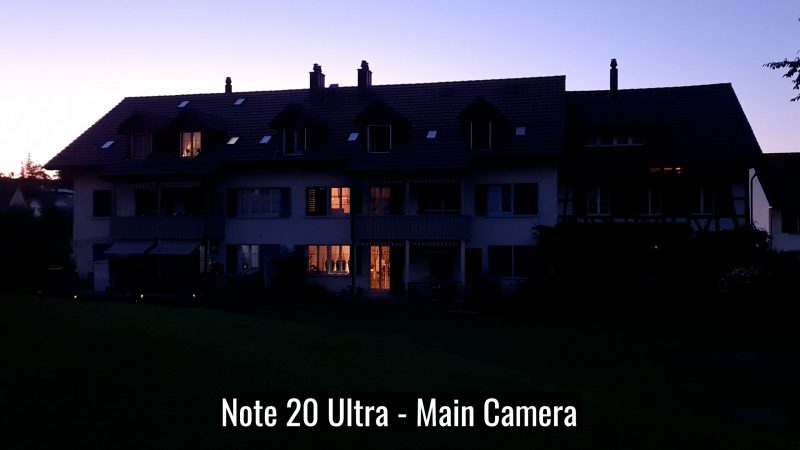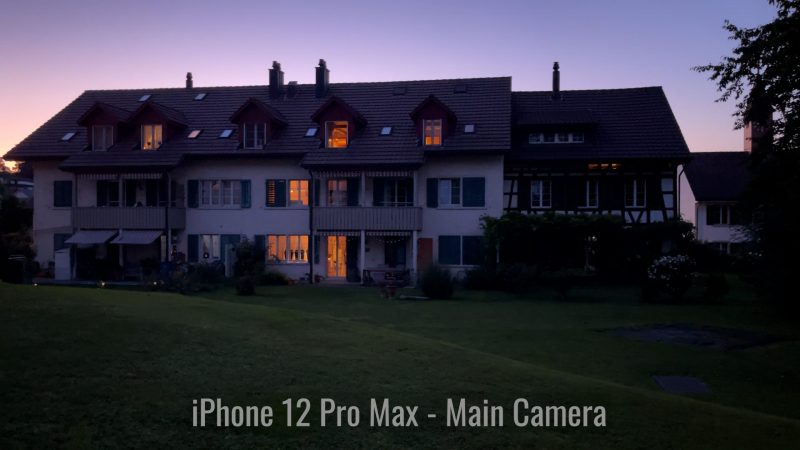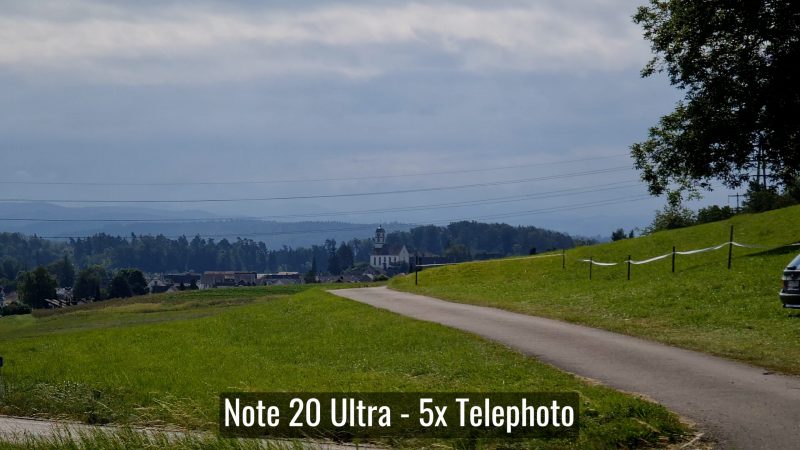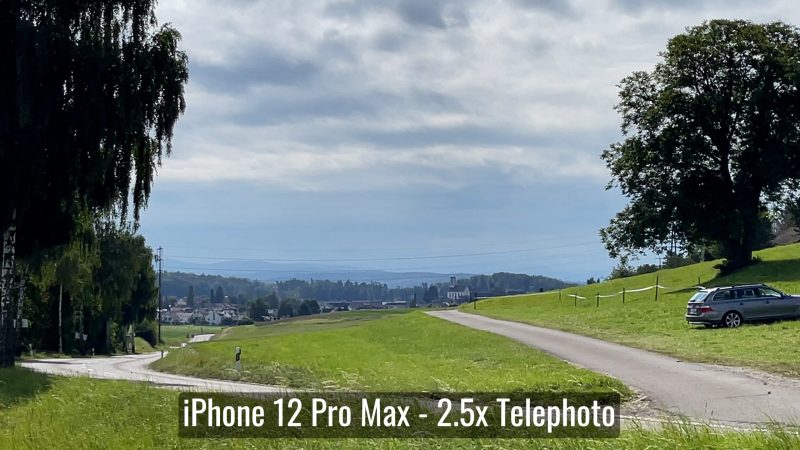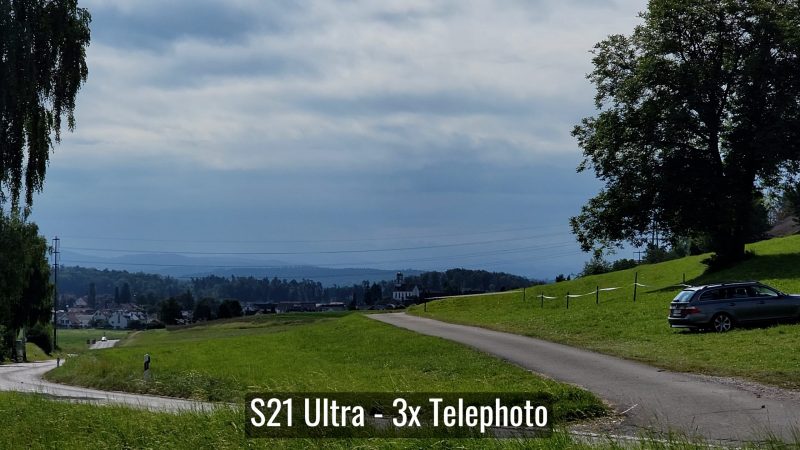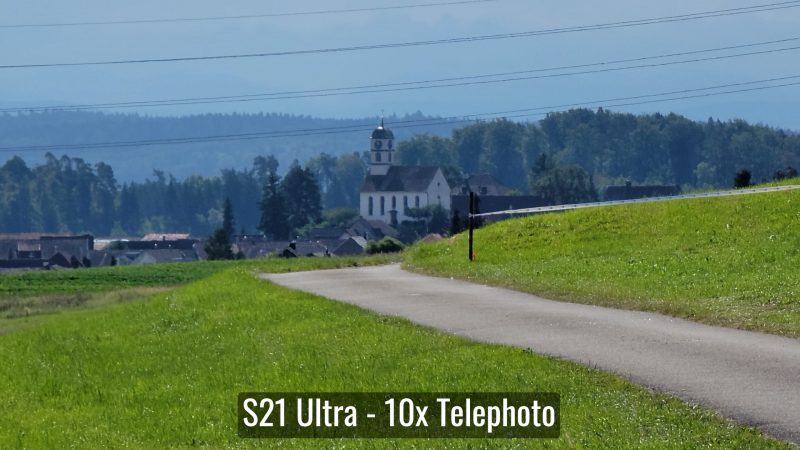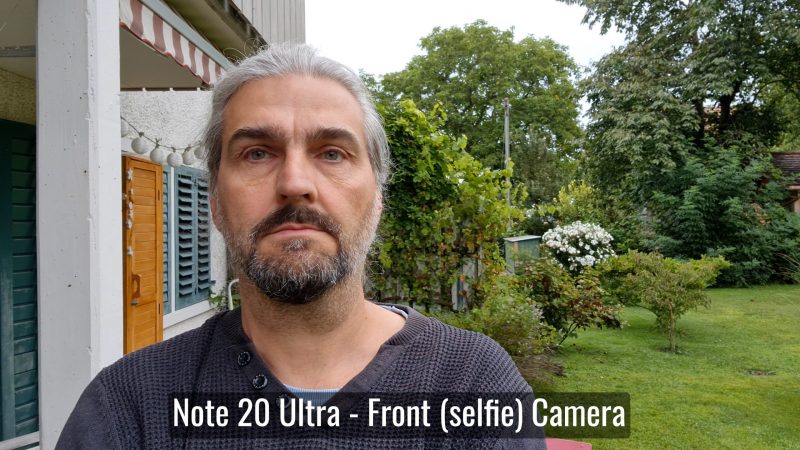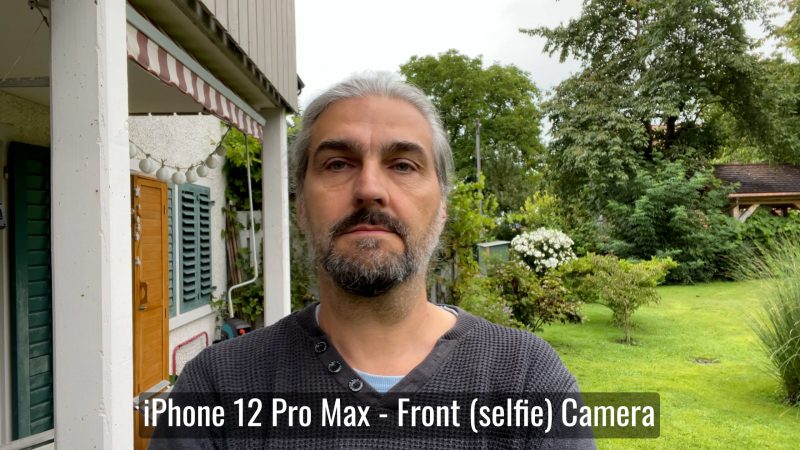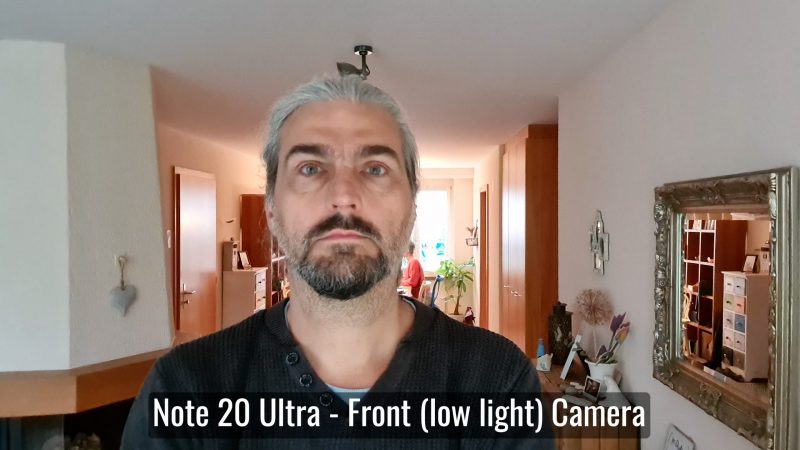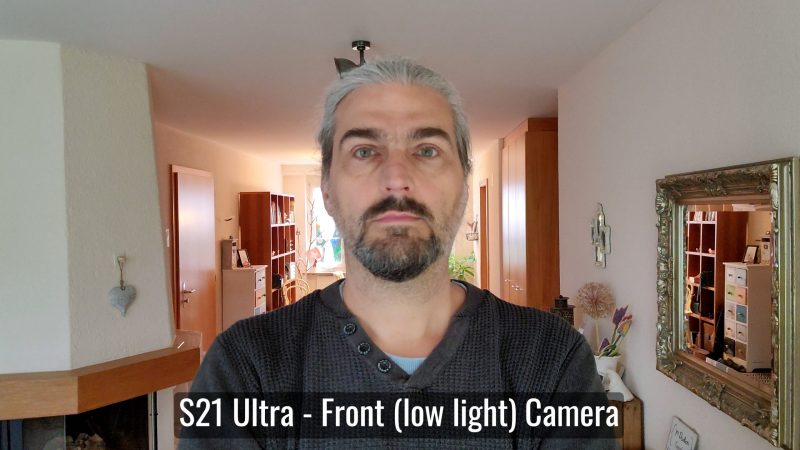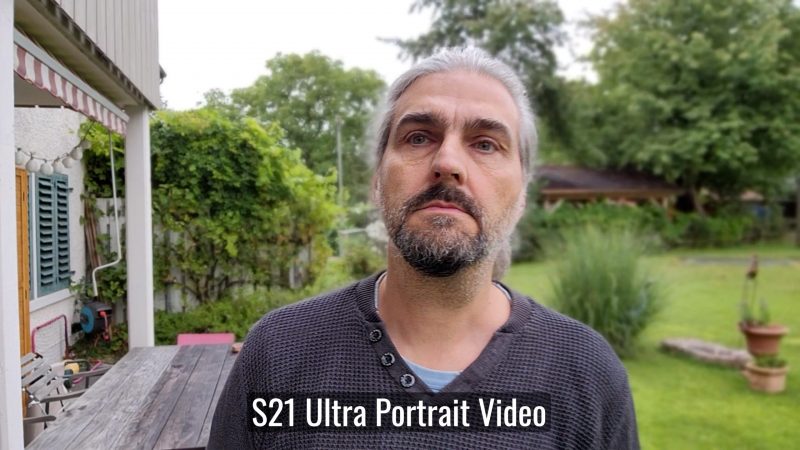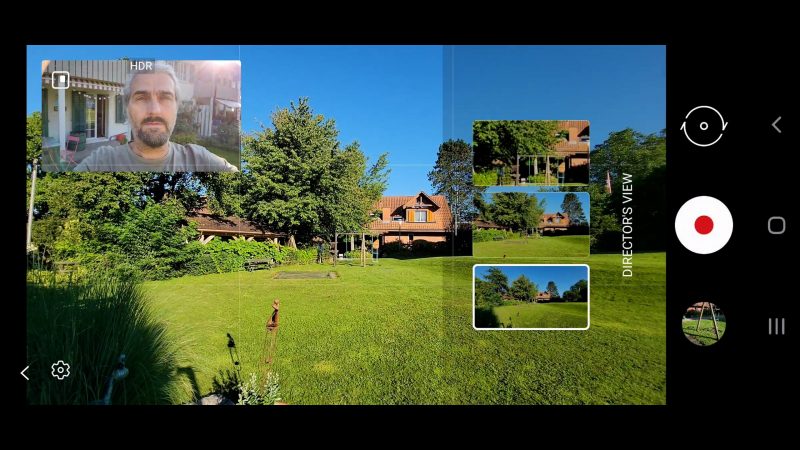Samsung S21 Ultra vs iPhone 12 Pro Max & Samsung Note 20 Ultra – Cinematic Video Review
When it comes to their cameras, these are 3 of the most powerful smartphones currently on the market. And it looks like we might not be seeing any more Note phones from Samsung, so this could be the last of its kind.
And I have to say, I was a bit surprised by the results I got with the Samsung S21 Ultra. Not quite what I was expecting.
First Impressions
I’ve been using the iPhone 12 Pro Max and the Note 20 Ultra this year and I’ve been very impressed with the cameras. They really feel like a new stage in cameras for smartphones. But this is my first chance to try out the Samsung S21 Ultra.
Note that this is the Snapdragon version of the Samsung S21 Ultra, which should be the better version.
The first thing I noticed when opening the camera is that there’s an extra lens choice. There’s 4 icons here instead of the 3 that you get on the iPhone and Note 20. That’s because this device has 2 telephoto cameras, while the other 2 devices only have 1.
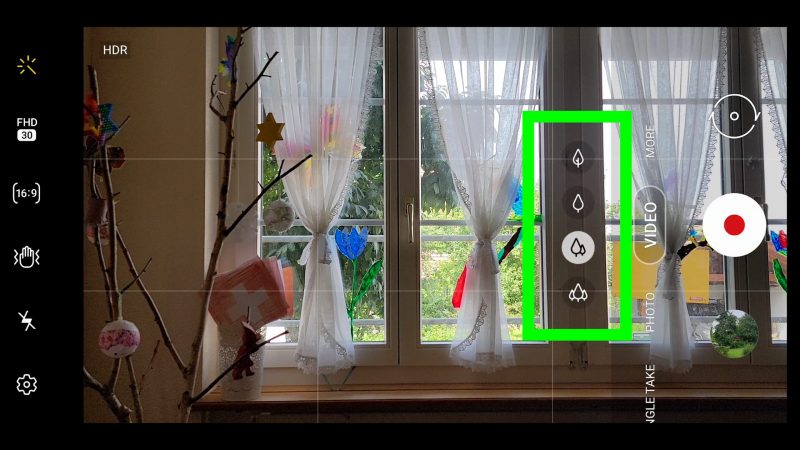
Samsung calls this their new dual tele camera system. But does this system live up to their hype and will this extra tele lens help us shoot better video?
On the other hand, the iPhone has the LiDAR sensor that creates a 3 dimensional map and helps with low-light photography and portraits.
Camera Comparison
When I select the ultra wide lens, it tells me this is a 0.6x lens. So slightly less wide than the Note 20 Ultra and the iPhone 12 Pro Max, which both have 0.5x ultra wide lenses. Although, a quick check shows me that both the Ultra Wide lenses on all 3 devices give a 120˚ field of view.
The iPhone 12 Pro Max has the least powerful telephoto lens of all, at 2.5x magnification. Meanwhile the Note 20 Ultra has a 5x tele lens and the Samsung S21 Ultra has a 3x tele lens and a 10x tele lens.
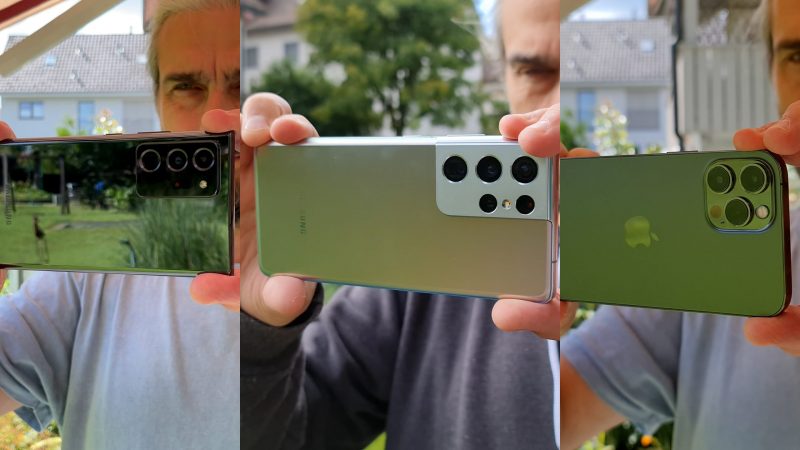
I’m only talking about the optical power of the telephoto lenses here. You can zoom in further with all 3 devices, but you are then using digital zoom which usually involves a gradual decrease in quality the further you zoom.
Let’s focus on the main sensor of each device, because that’s where you are going to be doing most of your work. The main sensor is always going to be the best quality camera, and I always recommend you use it over the other cameras – especially for video work.
Big Sensors
What makes the Samsung devices different from the iPhone is they both have this 108 megapixel sensor. The iPhone main sensor has 12 megapixels. That seems like a huge difference, but that just illustrates that bigger spec numbers don’t mean better.
The plus side of all those extra pixels is potentially more detail in photos. The downside is that to fit all those extra pixels onto a sensor which is about the same size means the pixels have to be smaller. Smaller pixels are generally speaking worse in low light conditions. That said, Samsung has used a technology which overcomes that called “pixel binning”.
Another “plus” is that all those pixels allow the Samsungs to shoot 8K video, whereas the iPhone is limited to 4K as a maximum resolution. But I don’t want to get too technical. Just be aware Samsung and Apple are using distinctively different technology in their smartphone cameras.
Shallow Depth of Field
All 3 devices have large main sensors which helps to give you a nice amount of blurry background. All 3 main cameras have the biggest aperture, which also helps to create a blurry-er background.
The iPhone has the biggest at f1.7 while the Samsung’s both have f1.8 aperture.
Main Camera: Filming Myself
I’ve been using the smartphones to film myself a lot and so far I prefer the Samsung Note 20 Ultra over the iPhone 12 Pro Max. I just find the Note 20 has a bit more of a softer, flattering look.
When I’m filming myself, I want the auto focus to lock onto my face and a nice amount of blurry background. And some flattering skin tones would be nice!
I tested all 3 devices at 2 distances using the main sensor at 4K and 30fps on auto exposure. All 3 picked up my face pretty well for auto focus. The Note 20 Ultra gives a brighter look than the other 2 devices.
Extra Noise
One thing I noticed was some extra digital noise in the darker areas from the Samsung S21 Ultra, even in these bright conditions. I feel like both Samsung devices give a shallower depth of field, noticeable when I stood further from the camera.
Another thing I noticed was that the iPhone made the biggest colour change as I moved into frame or turned around. This is with the camera on auto, but when I’m filming myself I need the camera on auto. So, for me, I prefer the way the Samsung devices don’t adjust white balance just because I turned my head.
If I had to make a choice, I think I would still pick the Note 20 Ultra for filming myself, even though the auto exposure is coming out a bit too bright. There’s less noise than the Samsung S21 Ultra and less white balance changes than the iPhone.
Main Camera: Test
I tried filming with the main camera on all 3 devices, at 4K and 30fps. When comparing the 2 Samsung devices, the S21 Ultra seems to have a greater dynamic range. But again there’s digital noise in the shadows.
Normally, we expect noise to appear when ISO is boosted in low light conditions. But these shots are all in bright daylight where we would expect ISO to be right at the bottom and for there to be no noise at all.
So I think we need to connect the dots here and assume this greater dynamic range is created using software.
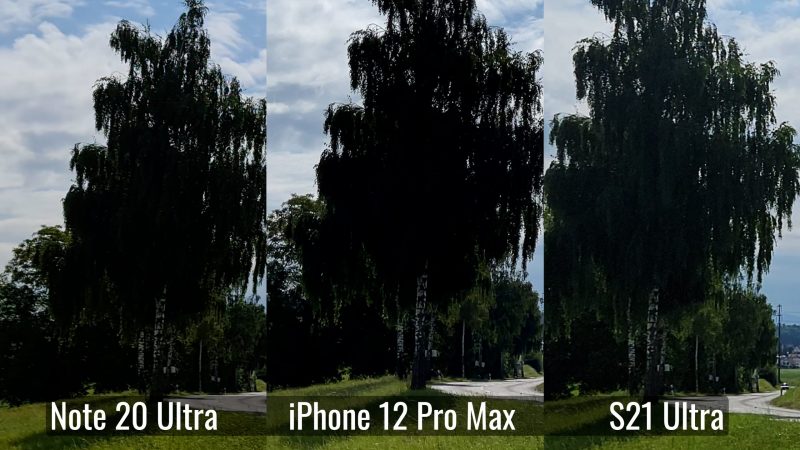
In other words, Dynamic Tone Mapping. This means that, to show more details in the dark areas, the S21 Ultra is pushing up the ISO but just for those parts of the image. And that’s why we see this extra noise in the shadows even in bright daylight.
The iPhone 12 Pro Max is known for its aggressive dynamic tone mapping and high dynamic range, but we can see that the Samsung S21 Ultra beats the iPhone for details in the shadows. Look at the trees and with the iPhone and the Note 20, there’s almost no detail. With the S21 Ultra, there is detail but – as I say – this comes at the cost of digital noise.
Low Light
I made some quick tests at dusk to see how each device copes with low light. I used the main video mode of each device, locking exposure and also reducing exposure.
All 3 produced extra noise, as we would expect. Comparing the 2 Samsungs, I think the Samsung S21 Ultra does slightly better than the Note 20 Ultra.
But when I panned with the iPhone, even though exposure was locked, you can see the device still brightens the image of the house as I pan across. Bear in mind, this is actually quite a bit brighter than it looked to my eyes.
I have to say, I find that really annoying. The iPhone has decided it knows better than me about how my video should look. Not only does it look wrong and overexposed, but it produces far more noise.
So, we have to say that in this simple test, the Samsungs win just by not being annoying. And between the 2 Samsungs, the S21 Ultra edges it.
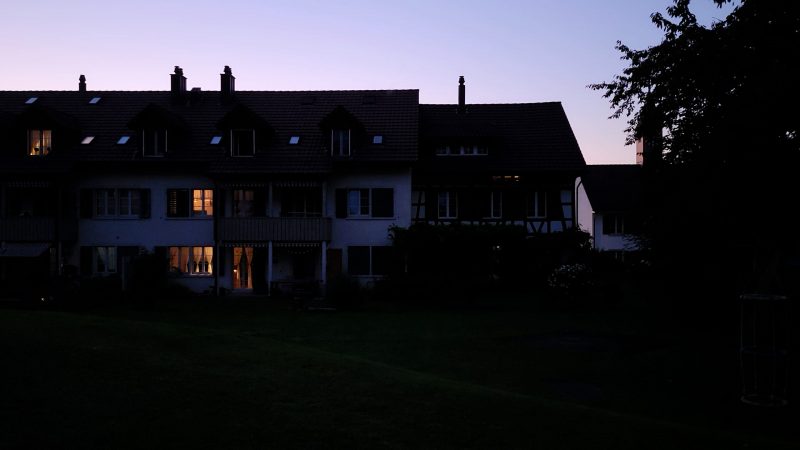
8K Video
While the iPhone is limited to 4K, both Samsungs can shoot at 8K resolution. To shoot 8K footage you need to go into Pro Mode then choose 8K which is only available at 24fps.
Actually, I just noticed that Samsung now allows you to shoot 8K from the regular video mode on the camera app. If you shoot 8K video in this mode, you will get some extra dynamic range from the tone mapping. If you use Pro Video Mode you won’t.
There’s also no lens options, because you need that giant 108MB main sensor to capture 8K detail. In a quick test, the S21 Ultra came out slightly better, to my eyes. The colours are better, with some beautiful crisp detail, especially when filming closer.
For members, I will upload some 8K clips to check out.
Telephoto lenses
I tested out the telephoto lenses in all 3 devices. The iPhone’s 2.5x is the most modest, with minimal magnification by comparison. On the other hand, the Samsung S21 Ultra’s dual tele system is the most powerful – on the surface at least.
In this shot I switched through from the main sensor, to the 3x optical lens and then to the 10x magnification. The quality remains good at 3x but you can see that at 10x a lot of quality is lost. At 20x it’s even more pixelated.
Whereas at 5x on the Note 20 Ultra it’s a nice clean image.
In these shots I used some foreground with the main lens and then the tele options. I’m just moving the camera very slowly to use the auto focus. Does the focus change smoothly and in an attractive way?
I found all 3 devices have a nice smooth movement as the focus changes. I would be happy to use any of those automatic focus pulls in a professional project. The iPhone reacts a little bit slower than the other devices – not better or worse but something to bear in mind.
Telephoto Portrait Test
Does the S21 Ultra give more shallow depth of field?
When you are using a normal camera, one of the main uses of a telephoto lens is to create a shallow depth of field. Telephoto – or “long lenses” – are often used for portraits, for this reason.
However, in smartphones telephoto lenses often have smaller apertures than the main camera so this usually negates any extra blurry background bokeh effect you might be hoping for.
But, the Samsung S21 Ultra has managed to pack a 10x optical telephoto lens into this phone so surely it must give us some extra blurry background.
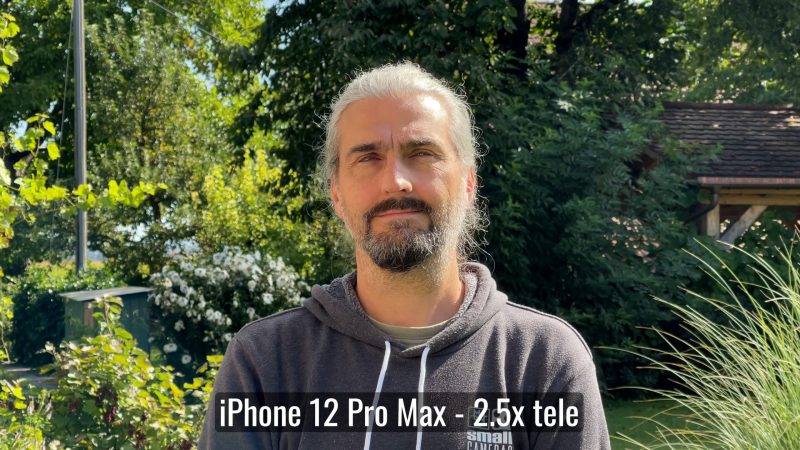
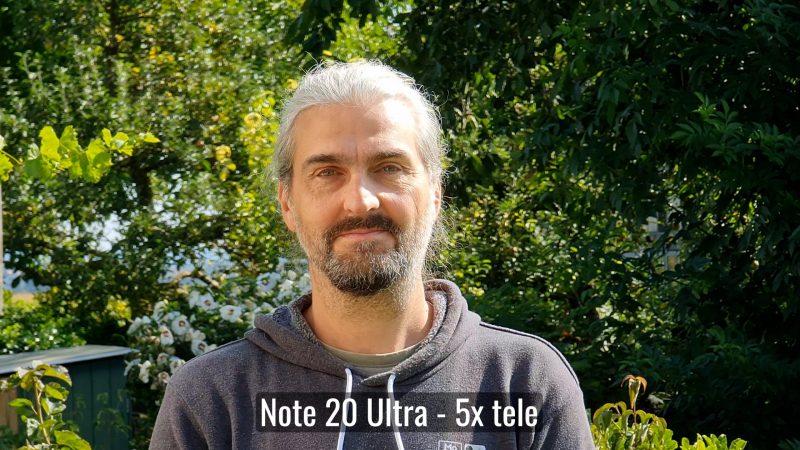
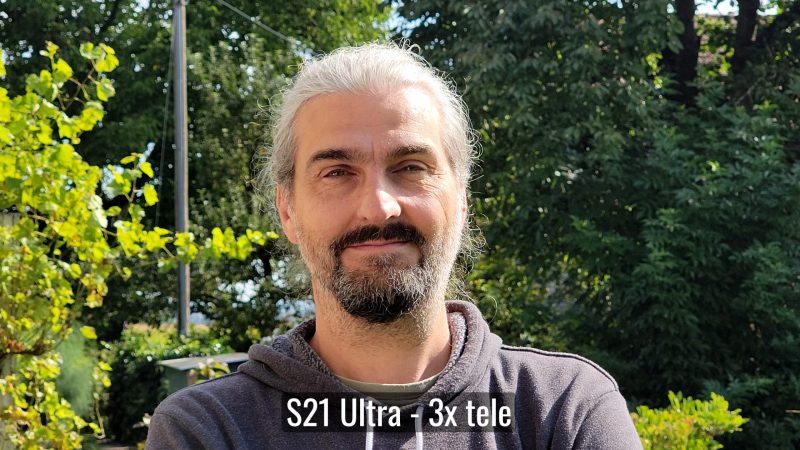
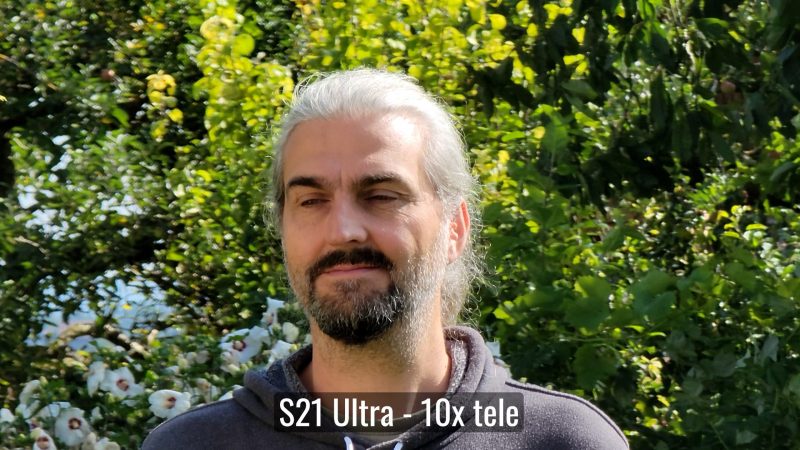
I tested all 3 devices’ telephoto lenses to see if they help us when filming a subject. Do we get extra bokeh?
And yes, this new 10x optical tele lens does seem to have a shallower depth of field. I had to stand much further away from the camera, as you would expect. In this shot, I’m about 3 or 4 meters away. And that means I’m nearer to the background.
Even though I’m much closer to the background, it’s a bit more blurry than the other lenses. Getting the framing and focus right is more tricky with this lens. It also looks as if the focus on my face is a bit soft.
Maximum Magnification
Using digital zoom at 4K resolution, 7x magnification is the maximum achievable on the iPhone. For both Samsungs shooting at 4K video resolution, 20x magnification is the limit. But none of them produce what I would consider usable video when set at the maximum. So I recommend you stick to the optical zoom.
Out of the 3 devices, to my eyes, the Samsung S21 Ultra is the least attractive to look at in terms of colour and contrast, as well as that extra noise in the shadows. I do like the more subdued natural-looking colours from the iPhone but for me the Samsung Note 20 produces the best overall telephoto performance when shooting video.
Ultra Wide Angle
All 3 ultra wide cameras have a 120˚ field of view. There’s not a huge quality difference between the 3. I found the quality to be about equal, if you ignore the extra noise produced by the S21 Ultra.
Selfie Camera
All 3 devices have high quality front facing selfie cameras. The Samsung Note 20 Ultra has a 10MP sensor, the iPhone 12 Pro Max has a 12MP sensor but the S21 Ultra has an impressively large 40MP sensor.
Apple hasn’t published the field of view for the front facing selfies camera, but we can test it to see if it’s dramatically different. All 3 allow you to shoot selfie videos up to 60fps @4K.
You can even shoot slow motion video with the selfie cameras, if you want. The iPhone can shoot at 120fps at a max resolution of 1080p. The Samsung devices allow you to shoot slow motion and super slow motion.
The Samsungs can go up to 240fps in slow motion mode at 1080p using the main camera or the selfie camera. When I tested the selfie cameras in more of a low light situation, the S21 Ultra came out the winner, with the other 2 producing quite a bit more noise and that 40MP sensor seemingly making the difference.
Stabilisation
While the iPhone has one mode of stabilisation, the Samsungs have 2 types. Basic stabilisation and Super Steady for extra smoothness. As well, the Samsungs allow you to switch stabilisation on and off while the iPhone does not.
The basic stabilisation of all 3 devices seems to work at a similar level. There doesn’t seem to be much difference between them.
Super Steady
If you switch on Super Steady using this icon, the device will use digital image stabilisation to add extra smoothness. However it will also limit the footage to 1080p resolution.
Slow Motion
The Samsungs can shoot up to 960fps slow motion while the iPhone 12 Pro Max can go up to 240fps. The Samsungs have 2 modes, slow motion – which is the equivalent of the iPhone’s slow motion – and Super Slow motion.
When you shoot in these modes you are limited to 1080p resolution on all devices.
My favourite way to capture slow motion B roll is to shoot at 60fps in 4K and slow it to 24fps when I edit. To get the smoothest footage, you want those frames per second to be as consistent as possible. But if a camera’s processor struggles the frames per second can go a bit out.
So let’s see how these 3 cameras perform at 60fps.
In this quick test, all 3 devices produced 60fps video very accurately, but the iPhone footage came out slightly more accurately. That said, there was so little difference and all the clips came out smoothly when slowed to 24fps.
Camera Extras
While the iPhone has more choice of 3rd party apps to use, Samsung attempts to compensate by giving you a bunch of extras for free, ready to go.
Portrait Video
All 3 devices have a portrait mode for photos, but the iPhone does not have a version for video while the Samsungs do. Considering the iPhone has the LiDAR scanner, you might expect it to have more 3D mapping features.
Portrait mode essentially creates a fake blurry background. But you can also use it to create certain effects. To do this on the iPhone you need an app like Focos.
It’s very simple to use portrait video on the Samsungs and it works quite well (in limited situations). If you are simply talking to camera and not moving your hands around, it’s just about acceptable. Once you shoot a clip of video, you can adjust it – change the effect, change the amount of effect.
Generally speaking, the less effect you use the more realistic it looks.
I found the Focos app to be more complex and therefore a longer learning time is required. You do get more controls, if you are prepared to put in the effort to get to know the app.
As well, as the Focos app uses the iPhone’s LiDAR sensor to map a 3D environment, you can only use it with the rear facing cameras (if you want to use LiDAR). However, you can switch to using AI instead, like the Samsungs.
I moved around in the frame to see how well each device kept track of me and maintained the fake blurry background.
And The Portrait Mode Winner is…
Both samsungs did quite well, but to my eyes the Note 20 Ultra does a slightly better job in the Portrait Video mode. The colours are a bit better and the AI does a better job at keeping track of the subject as I move around.
With the iPhone, I had to use the Focos app. Even using the main sensor plus the LiDAR sensor, the iPhone didn’t seem to track me any better. Also, to get the focus to follow me I had to edit in a follow focus using the app.
This took me about 20 minutes of playing around with settings in the app while the Samsung samples are straight out of the camera, with no messing about.
But when I used AI instead of LiDAR with the Focos app, it was much simpler. By the way, you’re limited to 720p unless you pay for the app to unlock higher resolutions.
Director’s View
The Samsung S21 Ultra has the Director’s View feature which allows you to shoot video using your device’s multiple cameras simultaneously. So, you can film yourself via the selfie camera and then choose from one of the rear cameras. You will appear in a little box, so maybe useful for social media work.
The Samsung Note 20 Ultra has a similar feature called Dual Recording, but it’s more basic than Director’s View. To do this on the iPhone you will need to download an app like FiLMiC’s DoubleTake.
Pro Video Mode
Both Samsung devices come with a pro photo and pro video mode, which allows you to have manual control over your device’s cameras. In other words, you can set white balance, set focus, set shutter speed and so on.
However, when you do this it overrides the dynamic tone mapping, meaning you will get less dynamic range. This can be quite a dramatic difference, especially in the S21 Ultra which is using aggressive tone mapping software. The good thing is that you no longer see that noise in the shadows.
To my eyes, once you switch off the dynamic tone mapping by using Pro Video Mode you get a much nicer-looking image, albeit with a lot less dynamic range. The details seem cleaner, whereas when the dynamic tone mapping is on, my guess is that the S21 Ultra is using aggressive noise reduction to control the noise created by the tone mapping.
The thing about noise reduction is that it makes the image look softer and more digital. It kind of rounds off the edges.
To get some kind of Pro Mode on the iPhone, again you will need a 3rd party app. There are quite a few good ones, starting with the famous FiLMiC Pro app. Note that with the iPhone your 3rd party app will not turn off the dynamic tone mapping. This means you never have full control of the exposure.
One downside of Pro Video Mode is that the tele lenses are not available. And, on the Samsungs, that’s true even when you use a 3rd party app. However, using a 3rd party app on the iPhone does allow access to the tele lens.
HDR
Both Samsung devices can shoot in the HDR10+ format, which is another dynamic tone mapping system to add extra dynamic range. Meanwhile, the latest iPhones have the option to shoot Dolby Vision.
This process adds the appearance of extra brightness to the final video. It also records in 10-bit colour instead of 8-bit. 10-bit colour gives you a much greater range of colour depth.
While you can see the difference if you just view the clip on your device, if you want to share the clip things get more complicated.
If you want to shoot and edit HDR10+ or Dolby Vision footage you must make sure you are editing it and mastering the footage in the correct colour space. Not all platforms support HDR10+ or Dolby Vision, but YouTube does.
If a video is mastered correctly and uploaded in one of these formats, you will see HDR written in the settings cog after YouTube has finished processing the video. But there’s one more obstacle which might prevent your viewers from seeing the video in HDR10+ or Dolby Vision. Because to view these HDR formats we need a compatible monitor.
If the viewer doesn’t have the right monitor, most of the time the video will just look like SDR. But occasionally the colours and exposure are way off so it might look bleached out and contain strange colours.
HDR Test Video Clips
I’ll include some HDR clips for members on Patreon to check out. But you might be able to find some videos uploaded in Dolby Vision or HDR10+ on YouTube somewhere.
Personally, I find Dolby Vision easier to use. Apple has made editing Dolby Vision clips directly on your phone easy using iMovie. You can also easily edit it using LumaFusion, just make sure to set the right colour space.
Also, Dolby Vision can be shot at up to 4K at 60fps while Samsung’s HDR10+ is limited to lower frame rates and, as far as I can see, 1080p resolution. Basically, there’s much less information and support for shooting and editing Samsung’s HDR10+. But I found the iPhone’s Dolby Vision very easy to set up, edit and master.
You can also shoot Dolby Vision using the selfie camera on the iPhone but you can’t do the same with HDR10+ on the Samsungs.
Conclusion
If I had to pick one of these phones, which one would I choose? Can you guess?
They’re all pretty close and there’s no out and out winner. However, I think I would pick the Samsung Note 20 for it’s all-round video-shooting quality. Shooting in auto on the main sensor looks great, the 5x telephoto produces pretty great video, portrait video comes out on top, too.
The Dolby Vision on the iPhone 12 Pro Max is streets ahead of the HDR10+ from the Samsungs and so convenient and easy to use, by comparison.
One thing I discovered while filming, which I hadn’t noticed before, on the Note 20 Ultra. When I selected 4K resolution at 60fps you lose access to the lens picker. In other words, you are restricted to the main sensor only.
Whereas both the iPhone 12 Pro Max and S21 Ultra allow access to all lenses at 4K and 60fps. Another thing I just spotted which is a difference between the 2 Samsungs: the S21 Ultra has this auto frame rate setting.
It’s called FHD (auto) and what this means is the camera will adjust the frame rate depending on the conditions, between 30 and 60fps. The iPhone has a similar feature, but it’s hidden in the camera settings.
If you intend on editing your video footage you will usually want a consistent frame rate, otherwise you might get video that’s juddering. If you’re going to edit on a 30fps timeline you want 30fps footage or frame rates that fit – like 60fps on a 30fps timeline fits. But a frame rate of 35 isn’t going to work well on a 30fps timeline.
The theory is that this dynamic variable frame rate ensures your video’s look stays consistent even as the lighting changes. I made a quick test with this setting and it came out at 60fps.
Eager to learn more?
Join our weekly newsletter featuring inspiring stories, no-budget filmmaking tips and comprehensive equipment reviews to help you turn your film projects into reality!
Simon Horrocks
Simon Horrocks is a screenwriter & filmmaker. His debut feature THIRD CONTACT was shot on a consumer camcorder and premiered at the BFI IMAX in 2013. His shot-on-smartphones sci-fi series SILENT EYE featured on Amazon Prime. He now runs a popular Patreon page which offers online courses for beginners, customised tips and more: www.patreon.com/SilentEye


